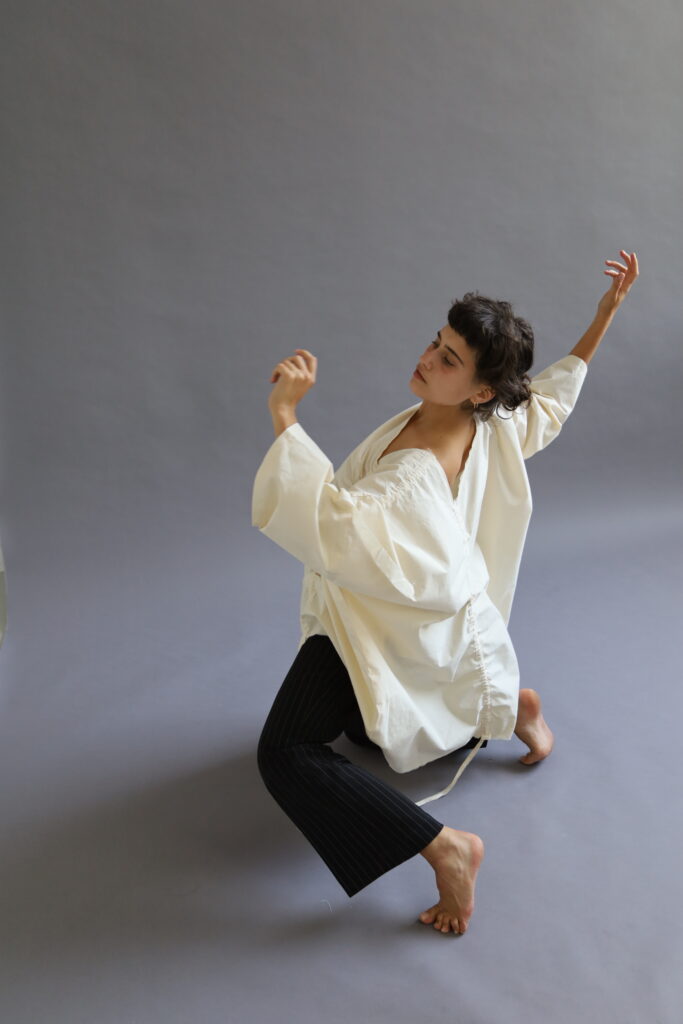DRESSED: The Widespread Role of Clothes, Textile Production and Cloth- ing Concepts in Society — Interweaving Perspectives
22 to 24 June 2022, University of the Arts Berlin, Germany, and online
By Ulrike Beck and Martin Jess
The Widespread Role of Clothes, Textile Production and Clothing Concepts in Society was the first conference in the DRESSED series about the multifaceted relationship between clothing and society. The BMBF-funded project INNOTEXGES organised the international conference at the University of Arts Berlin, Germany. It was held online from 22 to 24 June 2022. It included an in-person closing event and photo exhibition about clothing’s past and future at the Berlin Open Lab and the University of Arts in Berlin, Germany. The conference’s content was closely aligned with the key topics of the INNOTEXGES research project, which investigates clothing’s wide-ranging practical, communicative, and social functions and its qualities as a creative toolkit to enhance new skill sets. Within the project, new scientific methods are applied to primary data to investigate how clothing finds still provide wide-ranging information about their wearers and the technological and cultural knowledge, the availability of resources and even the innovative skills of societies. The conference was designed to distribute these ideas into the scientific discussion for archaeological research and its implications for future research. Since the INNOTEXGES project scientifically unites textile and design research with data science, the conference provided three different tracks to discuss the complex topic from different perspectives and interlink expansive scientific fields and their methods and approaches into a bigger picture. During the three conference days, the wide range of speakers and scientific fields opened new ways to investigate the multi-layered phenomenon of clothing’s complex role, with contributions from textile, dress and design researchers, dress historians, curators, conservators, archaeologists, writers, practitioners, and museum professionals.
In the three thematic sessions, 26 conference speakers from four continents presented their research about the expansive qualities and multifaceted roles of clothing in society. In addition, over 100 researchers from different scientific fields contributed as speakers, organisers, and attendees to the conference. Lively discussions about the interface of textile and design research and, in addition, innovative ideas about integrating data science were ground- breaking outcomes of the three-day conference.

On the first day, the conference started with “Track one — Perspectives on dress history: Understanding the past and finding the big picture”. This session explored how historical and ancient clothing strikingly characterises the social structures and epochs in their ongoing change through its many functions and qualities. Track one presented multiple perspectives and methodological approaches to discover clothing from different angles and explored various insights by translating the complex language of clothing through versatile data and sources. The keynote by Karina Grömer about “Visuality – Body language – Identity – Recreating prehistoric dress from Central Europe (2nd and 1st millennium BCE)” started the conference. The following papers presented archaeological, historical, linguistic, and experimental research, covered different sources, methods, and approaches, and gave new insights into the multifaceted relationship between clothing and society from Ancient Egypt and the Roman Empire as well as Central Europe and China.
On day two, track two explored how to structure and interlink data efficiently and, by doing so, how to problem-solve, think creatively, and ask meaningful questions. Through the papers and lively discussions, the session explored how to connect data and scientific thoughts and concepts by extension. The keynote lecture by Ulrike Beck about “Pattern Recognition: How to structure data methodically, create a repeatable reconstruction method, and understand clothing and motion in a mathematical system” started the second day with concepts about pattern recognition and methodological standards. The following presentations from different scientific fields explored the analysis of textiles from different viewpoints like patterns, fibres, and biomolecular methods.
During this session, various scientific projects and their efforts to build interconnected data archives were presented and discussed. Finally, a fruitful and broad discussion about the multiple challenges and the value of the data-driven methods ended track two with
many new ideas and approaches to interlinking the interdisciplinary research fields and their data. Day two showed that we are at an exciting starting point for a broader data connection between disciplines and historical timelines. It was concluded that integrating data science into textile research is challenging but opens a new dimension in archaeological clothing and textile research.
On the third day, “Track three — Creating the future: Responding to society” explored the political dimension of clothing, and the recent part clothing holds in society through new production strategies, materials, and clothing concepts. This session provided a multifaceted view of new research approaches and critical artistic practices and started with the keynote by Gesche Joost on “Smart wearable computing”. The following speakers presented the essential political and social dimensions of clothing in recent histories, such as colonial Spanish America, theSarong Revolution, and the Spanish Franco dictatorship. The conference was closed with a data-driven outlook by Martin Jess about “Defining the future research” on new trends in current research and also introduced the remarkable concept and practical research experiment led by Ulrike Beck about “Interweaving past and future: The ingenious principles by Xinjiang’s craftspeople in the first millennium BCE, eastern Central Asia and the Design Research Lab Experiment”. The experiment results were presented in a photo exhibition during the closing event at the Berlin Open Lab at the University of Arts Berlin.
A selection of the papers presented during the conference will be published in a joint volume as a permanent record of this insightful first conference in the DRESSED series. The next DRESSED conference will be held in June 2023.
Please find the full conference article in Archaeological Textiles Review No. 64 on page 164.